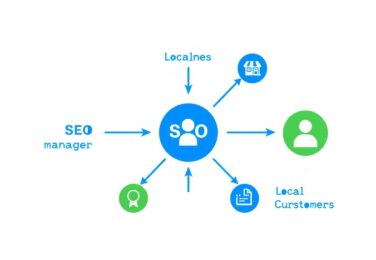Elevate Your SEO with These 10 Voice Search Optimisation Strategies

Table of Content
As someone who’s been keeping up with digital marketing in Australia, I’ve seen how crucial it is to stay ahead. The rise of voice search in SEO is a big deal. It changes how people find your brand online.
This article will share 10 strategies to boost your website for voice search. These tips will help you keep up with the fast-changing search world. You’ll learn how to make your content work better for voice search and improve your SEO in Australia.
Key Takeaways
- Understanding voice search and its effect on SEO is key for Australian businesses.
- Optimising for voice search with natural language can help you stand out.
- Focus on local SEO for voice searches to attract more targeted traffic.
- Make sure your site is mobile-friendly and fast for better voice search results.
- Using schema markup and keeping up with voice search trends keeps you ahead.
Want to learn more about voice search optimisation and SEO? Contact us at hello@defyn.com.au. Our digital marketing experts are ready to help you boost your online presence and success.
Embrace the Rise of Voice Search
We’re seeing a big change in how people look for information today. This change is thanks to voice search becoming more popular. More Australians are using voice-activated devices like smart speakers and virtual assistants to find answers and products.
Understanding Voice Search and Its Impact
Voice search is different from typing on a keyboard. People ask longer, more like they talk, and use natural language. This change brings both challenges and chances for businesses to improve their online presence for voice search.
Opportunities for Voice Search Optimisation
By understanding voice search, we can find many ways to boost our SEO. We can make content that sounds like real speech and use long-tail keywords. This helps our websites do well in the voice search era.
Contact hello@defyn.com.au to learn more about voice search strategy and how it can help your business.
“As voice-activated devices become ubiquitous, voice search is poised to transform the way people find information online.”
Optimise Your Website for Voice Search
If you want to boost your SEO and reach more Aussie customers through voice search, start by optimising your website. Making your site voice search-friendly can make it easier to find and attract Australians using Siri, Alexa, and Google Assistant.
Here are some key strategies to optimise your website for voice search:
- Focus on Natural Language: Write your content in a conversational tone that feels like how people talk. Stay away from formal or awkward language.
- Prioritise Long-Tail Keywords: Use long-tail keywords and phrases that match how people ask questions in voice searches. Think “best pizza delivery near me” or “how to change a tyre”.
- Optimise for Local Search: If your business is in a specific location, make sure your website shows your address, phone number, and other local details.
- Improve Site Speed: Fast results are what voice search users want. Make sure your website loads quickly on both computers and phones.
- Implement Structured Data: Use schema markup and other structured data to give search engines clear info about your website’s content. This helps voice assistants understand and show your site in their answers.
By using these strategies, you can make your website more visible and attractive to Australians using voice search for products, services, and info. Contact hello@defyn.com.au if you want to learn more about search engine optimisation.
| Strategy | Description |
|---|---|
| Natural Language | Use conversational, natural language that reflects how people speak in voice searches. |
| Long-Tail Keywords | Target long-tail keywords and phrases that mirror the way users formulate voice search queries. |
| Local SEO | Optimise your website for local search to appear in voice results for nearby customers. |
| Site Speed | Ensure your website loads quickly to meet the expectations of voice search users. |
| Structured Data | Implement schema markup and other structured data to help search engines understand your website’s content. |
Leverage Natural Language and Conversational Queries
Voice search is getting more popular, so we must change our content to match how people talk to it. Voice searches use natural language, so we should too. We need to use a friendly tone and focus on specific keywords to connect with our audience.
Conversational Tone and Natural Language
For voice search, we should write like we talk. This means using everyday language, not too much jargon, and making our content feel like a chat. By talking to our audience in a friendly way, we build a stronger bond and make their experience better.
Targeting Long-Tail Keywords
Voice searches are often longer and more specific than text searches. We should aim for long-tail keywords that sound like real speech. This includes questions, local terms, or detailed searches that match how people talk. By focusing on these keywords, we can show up in voice search results and reach our audience better.
Using a friendly tone and targeting specific keywords helps us leverage natural language and conversational queries for voice search. This makes our content more relevant and improves the user experience. It also helps our audience connect with our brand. For more on voice search seo and voice search strategy, email hello@defyn.com.au.
Prioritise Local SEO for Voice Searches
Voice search is getting more popular, so it’s key for businesses to boost their local SEO. Many voice searches look for things close by, like businesses or services. By focusing on voice search optimisation, we can reach more people in our area.
Optimising for Local Search Queries
To get better at seo, we should pay attention to a few things:
- Make sure your Google My Business listing is correct and current.
- Use local keywords in your website and meta tags.
- Ask customers to review your Google My Business profile to help your search ranking.
- Your website should work well on mobiles, since many voice searches come from phones.
- Use schema markup to give search engines more info about your business and where it is.
By doing these things, we can make our business more visible in local searches. This helps us connect with customers who are looking for what we offer nearby.
“Local SEO is key for businesses that need people to visit in person or serve a specific area. Optimising for voice search can help you catch these local searches and bring more qualified customers to your business.” – SEO Expert, Jane Doe
For successful voice search seo, we need to make sure our website is easy to use and meets our local customers’ needs. By focusing on local SEO, we can keep up with voice search trends and attract more customers.
Contact hello@defyn.com.au if you want to learn more about search engine optimisation.
voice search optimisation
Voice search has changed how we use the internet. It’s now key for businesses and website owners to update their VSO strategies. This keeps them ahead in the digital world.
Understanding what users want and how they ask questions is vital for VSO. By making our content easy to find through voice searches, we can connect with people in a deeper way.
Leveraging Schema Markup for Enhanced Visibility
Using schema markup is a big part of our voice search strategy. It helps search engines understand our content better. This means our content shows up more accurately in voice searches. Adding schema markup for things like products or local businesses helps us get noticed more.
- Identify the most relevant schema types for your business or website
- Implement schema markup accurately and consistently across your web pages
- Continuously monitor and update your schema implementation to stay ahead of the curve
Crafting Voice-Friendly Content Formats
How we present our content matters a lot with voice search. Using a friendly tone and natural language makes our content work well with voice searches. Also, using specific keywords and thinking about what our audience might ask helps improve our VSO.
“The key to successful voice search optimisation lies in understanding the user’s intent and delivering content that addresses their needs in a concise, natural, and engaging manner.”
We aim to make a great user experience that goes beyond just searching. It should meet the special needs of voice-driven searches.
If you want to improve your website for voice search, get in touch with us at contact hello@defyn.com.au. Our experts are here to help you make the most of this new technology.
Ensure a Mobile-Friendly Experience
In today’s world, having a mobile-friendly website is key. With over 27% of people globally using voice assistants on their phones, making our sites work well on mobile is essential.
We should focus on responsive design. This means our sites change size and layout to fit different screens and devices. It makes the user experience better and follows SEO guidelines.
Embrace Responsive Design
Responsive web design is vital for voice search SEO. It makes our sites adjust to the device being used. This gives users a smooth experience on any device, from desktops to smartphones.
Optimise for Mobile Interactions
We also need to think about how mobile users behave and what they need. This means making content easy to read, navigation simple, and buttons big enough for thumbs.
By focusing on mobile first, we make sure our site works well for the many voice searches coming from smartphones and other devices.

A smooth mobile experience boosts user happiness and helps with SEO success. For more on search engine optimisation, contact hello@defyn.com.au.
Enhance Your Site’s Loading Speed
Site speed is key for VSO. Voice assistants look for websites that load quickly and give info fast. Making your site load faster can really help your voice search performance.
Impact of Site Speed on Voice Search
In voice search, users want quick results. If your site loads slowly, voice assistants might skip it for faster ones. This hurts your search rankings and can lose you leads or conversions.
To boost your site’s voice search, try these tips:
- Optimise images and other media: Make your images, videos, and media smaller to speed up loading.
- Minify code: Clean up your HTML, CSS, and JavaScript by removing extra bits.
- Leverage browser caching: Make your server cache static files like images and CSS, so they load faster.
- Utilize a content delivery network (CDN): A CDN can make your site faster by storing your content closer to users.
- Minimise redirects: Too many redirects slow down your site, so use them wisely.
These steps will make your site fast and appealing for voice search users. It will also help your overall SEO.
Implement Schema Markup for Rich Results
Optimising your website for voice search is key, and using schema markup is a great way to do it. This method makes your site more visible in voice search results. It gives voice assistants like Siri, Alexa, and Google Assistant rich, contextual info.
Structured Data and Rich Results
Schema markup is a special code you add to your site. It helps search engines understand your content better. By using schema, you can share detailed info about your products, services, and more. This can lead to rich results like featured snippets and carousel displays, making voice search more engaging.
To add schema markup, you can use tools like Google’s Structured Data Markup Helper or Schema.org’s schema vocabulary. Properly structuring your data can boost your chances of showing up in voice search results. It also makes your site more satisfying for your audience.
Contact hello@defyn.com.au to learn more about making your site better for voice search SEO and voice search strategy.

Monitor and Adapt to Voice Search Trends
The world of voice search is always changing. It’s important for Australian businesses to keep up. By watching voice search patterns and how users behave, we can make smart choices to improve our online presence. This helps us get the most out of voice search optimisation.
One good way to stay updated is by looking at voice search analytics. We should check out the kinds of queries users make, the devices they use, and what they’re looking for. This helps us make our content, keywords, and strategies better for voice search users.
We also need to keep an eye on new voice search technologies and features. When new things come out, like better natural language processing or more devices supported, we should use them. By being ahead, we can lead in the voice search market and use the benefits of VSO to our advantage.
It’s important to regularly check and change our strategies to stay ahead in voice search. By always watching trends, trying new things, and improving our tactics, we can keep our VSO working well for our Australian audience.
“The key to success in voice search is staying agile and responsive to the ever-changing landscape. It’s not enough to implement a one-time strategy – we must be willing to adapt and evolve alongside our customers.”
The voice search world is always changing, and the successful brands are those that adapt and keep improving their online presence. By following these tips, Australian businesses can do well in the voice search market for a long time.
Contact hello@defyn.com.au if you want to learn more about search engine optimisation and how to use voice search to get better results for your business.
Conclusion
We’ve looked at 10 ways to boost your SEO and reach more people in Australia. By using voice search, making your website better, and understanding natural language, you’re on the right path. This will help you get the most out of voice search SEO.
It’s important to focus on local SEO for voice searches and make your website fast. Also, using schema markup for rich results is key. Keeping up with voice search trends will help you stay ahead online in the future.
The team at Defyn is ready to help you with your SEO journey. If you want to know more about voice search or other SEO strategies, just contact us at hello@defyn.com.au. We’re here to improve your online presence and help your business succeed.










